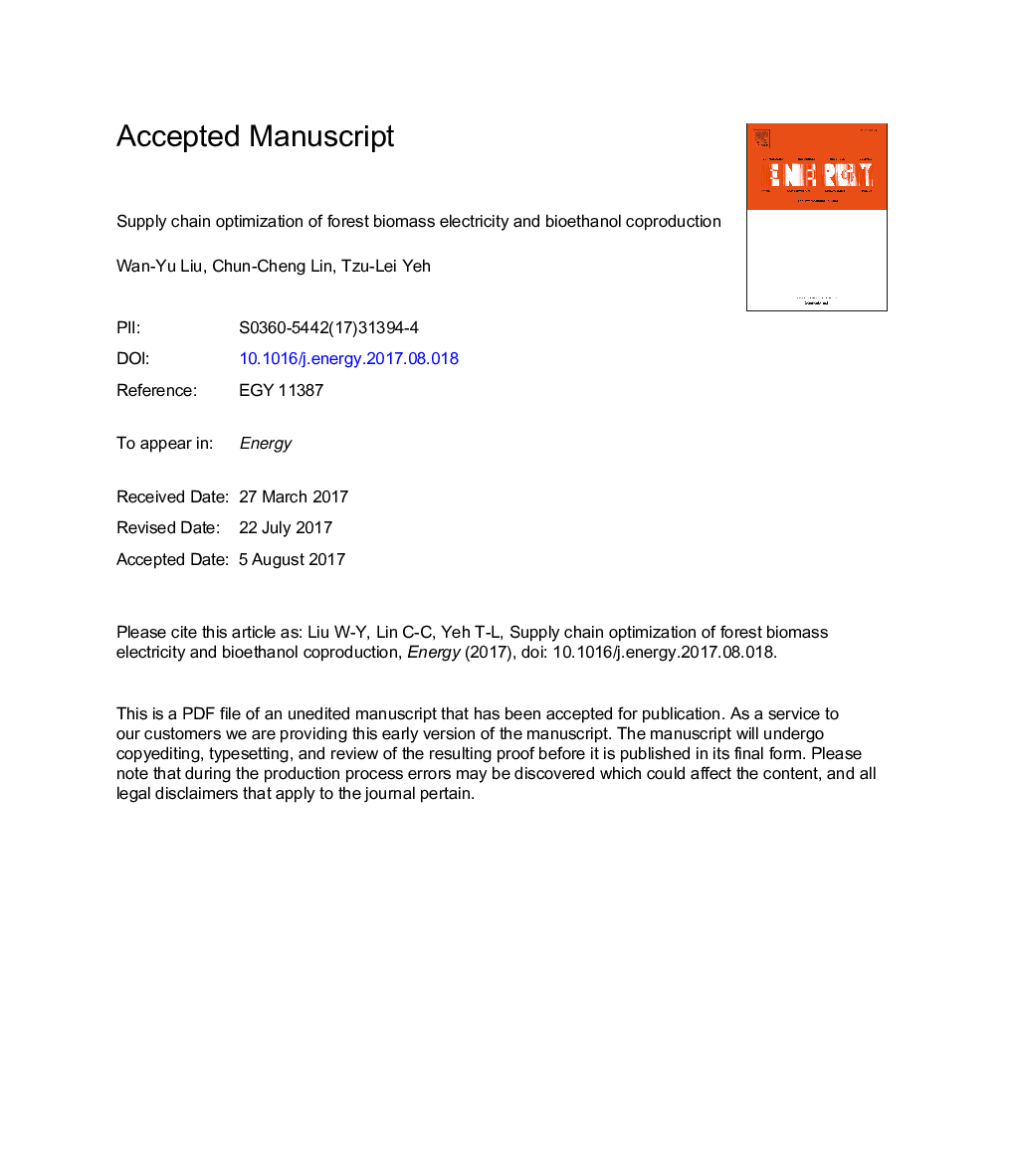| Article ID | Journal | Published Year | Pages | File Type |
|---|---|---|---|---|
| 5475626 | Energy | 2017 | 59 Pages |
Abstract
To establish a systematic and efficient forest bioenergy supply chain management system, most previous related studies did not investigate a system that involves generating two or more types of energy simultaneously, and did not consider the carbon emissions caused by electricity power generation of forest biomass combustion. Consequently, this study addressed the problems regarding the tactical supply chain optimization of a forest biomass electricity and second-generation bioethanol coproduction plant. A mixed-integer linear programming model was employed to determine the optimal production strategies to maximize the profit and to minimize the carbon emissions cost. The advantages of coproduction include enabling equipment and facility sharing, reducing investment costs, and dispersing the risks that involve raw materials, leading to synergy. Empirical simulation results indicated that the coproduction model yielded more profit than the independently operated model. When electricity demand is reduced, the coproduction model mitigates its profit losses through an increase in its bioethanol production. However, when faced with an increase in carbon emission costs, the coproduction model loses its advantages. According to the sensitivity analysis, electricity prices are the most vital parameter to the profit of the model, followed sequentially by the higher heating value of raw materials and carbon emission costs.
Keywords
Related Topics
Physical Sciences and Engineering
Energy
Energy (General)
Authors
Wan-Yu Liu, Chun-Cheng Lin, Tzu-Lei Yeh,
